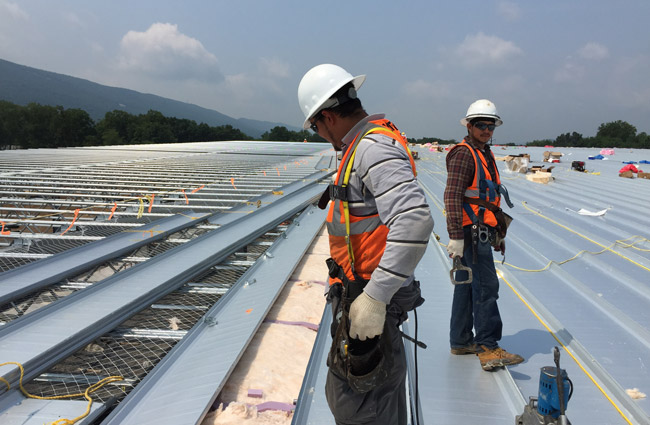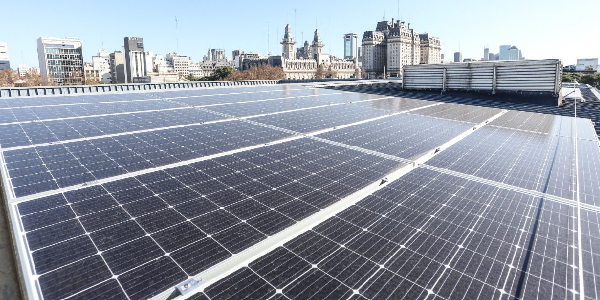UP TO THE MINUTE
These Roofs are Cool in a Number of Ways

By DrexelMetals.
There are more than a few ways to be cool, but when it comes to greener and energy efficient roofing, these roofs are literally cool.
Sustainable building innovations have grown throughout the past decade. With designers and building owners looking to reduce their environmental impact, the demand for greener materials that offset the emissions and pollution of creating new buildings is higher than ever.
One way designers can mitigate a project’s environmental footprint is by considering the roof. Cool roofs help structures use less energy over the course of their lifespan to support more sustainable buildings. In general, cool roofs work by absorbing less solar energy and quickly shedding the heat they do absorb. Because cool roof products exist for almost every kind of roofing system, they can readily be used for new projects or incorporated into a retrofit.
However, not all cool roofs perform equally. To help quantify what properties a roof must have to be considered “cool,” several green building initiatives have established a cool roof rating system and defined their own minimum ratings needed for a cool roof. For example, the California Energy Commission has different requirements than the Leadership in Energy and Environmental Design (LEED) but both initiatives use the same rating system.
What are cool roofs and how are they rated?
Cool roofs reflect more sunlight than a conventional roof and emit heat more efficiently. This means they absorb less solar energy to stay cooler during the day, thereby tempering the heat flow from the roof to the occupied space below. It also means they shed heat quicker than conventional roofing systems, further cutting down the energy needed to regulate a comfortable temperature within the building.
Because a cooler roof results in a cooler building, these systems can reduce the strain on air conditioning systems and improve the building’s natural interior comfort without extensive energy consumption. To quantify this, a roof’s solar reflectance and thermal emittance are each measured on a scale of 0 to 1. Calculating a roof’s Solar Reflectance Index (SRI) can also indicate how a cool roof will perform.
Solar reflectance measures the ability of a roof to reflect sunlight, and thermal resistance measures how quickly a roof cools down. For both metrics, the higher the score, the better the cool roof will perform. Likewise, a high SRI indicates a very cool roof.
In addition to these measurements, slope can also affect the threshold requirements for being considered a cool roof. Steep sloped roofs (pitches greater than 9.5 degrees) can still be considered cool with lower scores across the board because their pitch limits direct exposure to sunlight.
How do cool roofs help the environment?
Cool roofs help the environment in two main ways. First, they reduce the energy needed to ensure a comfortable temperature inside a building by transferring less heat to the spaces below them. They also cool quicker after sunset, resulting in a smaller carbon footprint over the course of a building’s life.
Secondly, these roofs can help neighboring buildings use less energy by reducing the heat island effect, which is when urban areas experience hotter-than-average temperatures due to paving, roofing and other heat absorbing materials. Because they do not heat up as much as standard roofs, they can reduce the higher-than-average heat in urban settings. This helps the surrounding buildings work a little more efficiently.
Can metal roof systems be certified as cool roofs?
Because metal roofing systems are available in a wide range of durable and fade-resistant colors, they can easily achieve cool roof ratings. In fact, the majority of Drexel Metals’ color options are rated as cool roofs and have the ability to reflect and re-emit solar radiation by up to 90 percent. This means that architects and building owners are likely to find a cool roof color option that matches their desired design aesthetic.
Further, because metal roofing systems contain 30 – 60 percent recycled content and last two to three times longer than other roofing materials, they support sustainable construction in ways beyond cool roof ratings.
Keeping cool while looking cool
Cool roofs can help buildings more easily regulate interior temperatures, increasing occupant comfort during the hottest part of the day without additional strain on air conditioning systems. They can also contribute to an inspiring exterior design.
In addition to a myriad of color options, cool roof-rated metal roofing systems are available in several profile styles and gauges, both of which can subtly change the look of a building’s profile. From crisp and monolithic to rustic and charming, metal roofs can meet almost any design aesthetic while also helping to reduce the impact the building industry has on the environment.
Learn more about DrexelMetals in their directory or visit www.drexmet.com.
Original article source: DrexelMetals


















Comments
Leave a Reply
Have an account? Login to leave a comment!
Sign In